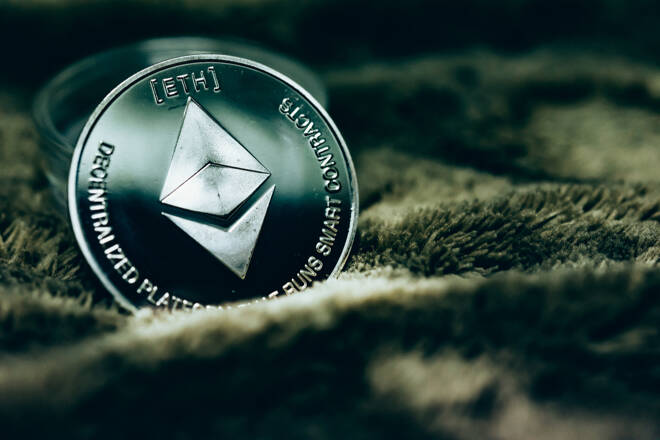Advertisement
Advertisement
Everything you Need to Know About Ethereum Gas Fees
By:
The crypto space is full of jargon and words that may come across as confusing to newcomers in the space. Ethereum's gas fee is a complicated topic that we aim to decode here.
Key Insights:
- Gas fee defines the amount of ether (ETH) required by the blockchain for a user to interact with the network.
- To successfully conduct a transaction on the Ethereum blockchain, a gas fee is charged.
- High Ethereum gas fees have often pushed users away from the network towards Ethereum killers.
Apart from the larger bear market tunes, another phenomenon from the crypto space that has gained considerable recognition in the past is Ethereum’s gas fee. The debate around high gas fees and arguments about the Ethereum Merge solving the gas fee issue has surfaced regularly on crypto Twitter.
While understanding Ethereum’s gas fee isn’t rocket science, the sheer volumes of text available on the web to explain the relatively simple phenomenon can often confuse the masses.
In layman’s terms, considering the Ethereum blockchain to be a network, gas fee is a sum all users must pay to perform any function on the network. Over the last few months, amid anticipation of the Merge, analysts and researchers have debated whether the Merge could, in fact, reduce gas prices.
Before understanding how gas prices might be affected after the Merge, it is crucial to take a look at what Ethereum’s gas fees mean. This article shall cover everything you need to know about Ethereum gas fees before the Merge.
Ethereum’s Fuel – Gas Fee
Ethereum.org states,
“Gas is essential to the Ethereum network. It is the fuel that allows it to operate, in the same way that a car needs gasoline to run.”
Gas is the term used to define the amount of ether (ETH) required by the network for a user to interact with the network. More specifically, it refers to the unit that measures the amount of computational effort needed to execute specific operations on the Ethereum network.
A transaction on Ethereum requires gas to be completed successfully. Gas fees are paid in Ethereum’s native currency, ether. The chart given below shows the Ethereum Average Gas Price.
At the time of writing, Ethereum’s Average Gas Price was at a level of 13.69, down from 15.79 a day before and down from 24.90 one year ago. This means that the Average Gas Price has seen a 13.32% pullback on the daily and 45.01% pullback on the yearly window.
The gas fees paid by users and developers are used to compensate Ethereum miners for the energy required to verify a transaction. These fees also add a layer of security to the network by making it too expensive for bad actors to spam the Ethereum blockchain.
As Ethereum transactions require computational resources, there is a fee associated with each transaction. To successfully conduct a transaction on the Ethereum blockchain, a gas fee is charged.
When talking about gas fees, the word gwei often pops up. Well, gas prices are denoted in gwei, which itself is a denomination of ETH – each gwei is equal to 0.000000001 ETH.
Gas Fee and Ethereum Upgrades
The way transaction fees on the Ethereum network were calculated before the London Upgrade of August 2021 has changed. The London Upgrade was implemented on 5 August 2021 to make transacting on Ethereum more predictable for users by overhauling Ethereum’s transaction fee mechanism.
Ethereum’s official website highlights that the benefits of the London Upgrade include better transaction fee estimation, quicker transaction inclusion, and offsetting the ETH issuance by burning a percentage of transaction fees.
Ethereum had fixed-sized blocks before the London Upgrade. When the network demand was high, these blocks operated at total capacity. This led to users waiting for high demand to reduce to get included in a block, which led to a poor user experience.
The Upgrade introduced variable-size blocks to Ethereum, each block with a target size of 15 million gas. This time, however, the size of blocks will increase or decrease in accordance with network demand, up until the block limit of 30 million gas (2x the target block size).
Compared to the pre-London gas auction market, the currency transaction-fee-mechanism change causes fee prediction to be more reliable, according to ETH developers.
Gas Fee Post The Merge
Over the last couple of years, Ethereum’s high gas fees have received criticism and pushed many users towards Ethereum-killers. Rival layer-1 (L1) blockchains like Solana, Cardano, Avalanche, and others have seen a relative rise in DeFi TVL and higher adoption owing to the high gas fees on the Ethereum network.
However, many in the market believe that the upcoming Merge could change high Ethereum gas fees. Notably, the Merge is the most significant update to Ethereum since its launch in 2015.
The post-merge network – Ethereum 2.0 or Eth2, essentially refers to a set of upgrades that would make Ethereum more scalable, secure, and sustainable. Data from an Ethereum blog highlights that PoS is nearly 2000x more energy efficient, reflecting at least a 99.95% reduction in total energy use.
Nonetheless, opinions have emerged presenting how the much-anticipated Merge might not reduce gas fees. DeFi researcher Vivek Raman shared in a recent Tweet that Ethereum’s high gas fees are because of the increased block space demand and not a function of the “consensus mechanism.”
Raman further added that the purpose of the Merge is to deprecate Ethereum’s proof-of-work consensus mechanism and replace it with proof-of-stake. He concluded that the network fees aren’t expected to come down; instead, users can use layer2 solutions for reduced costs.
About the Author
Varuni Trivediauthor
A Journalism post-graduate with a keen interest in emerging markets across South East Asia, Varuni’s interest lies in the Blockchain technology. As a financial journalist, she covers metric and data-driven stories with a tinge of commentary, and strongly believes in HODLing.
Advertisement
